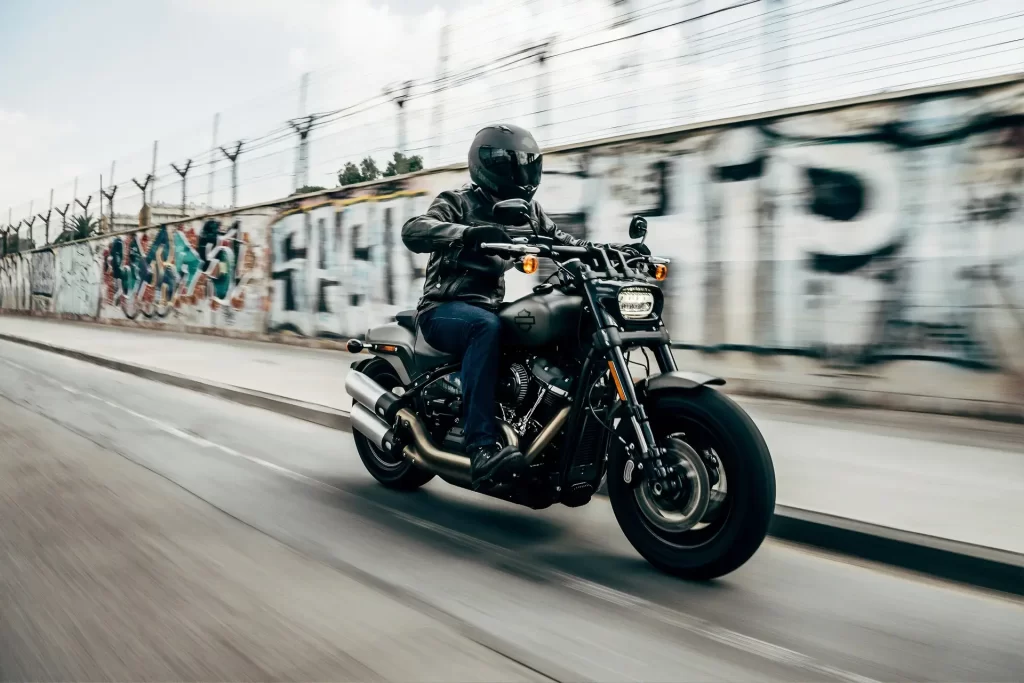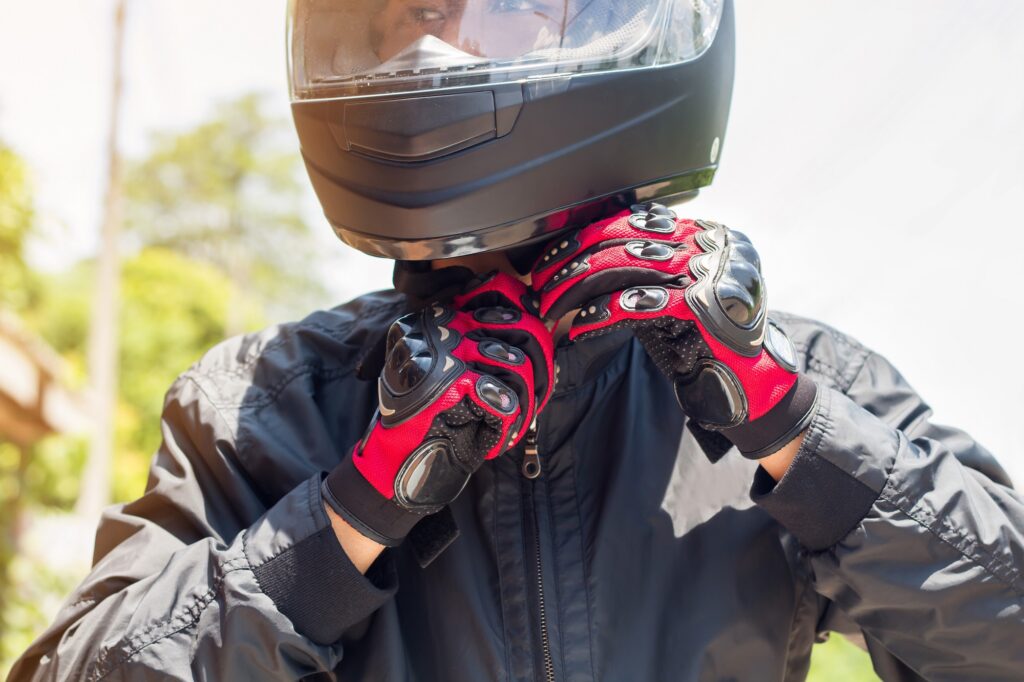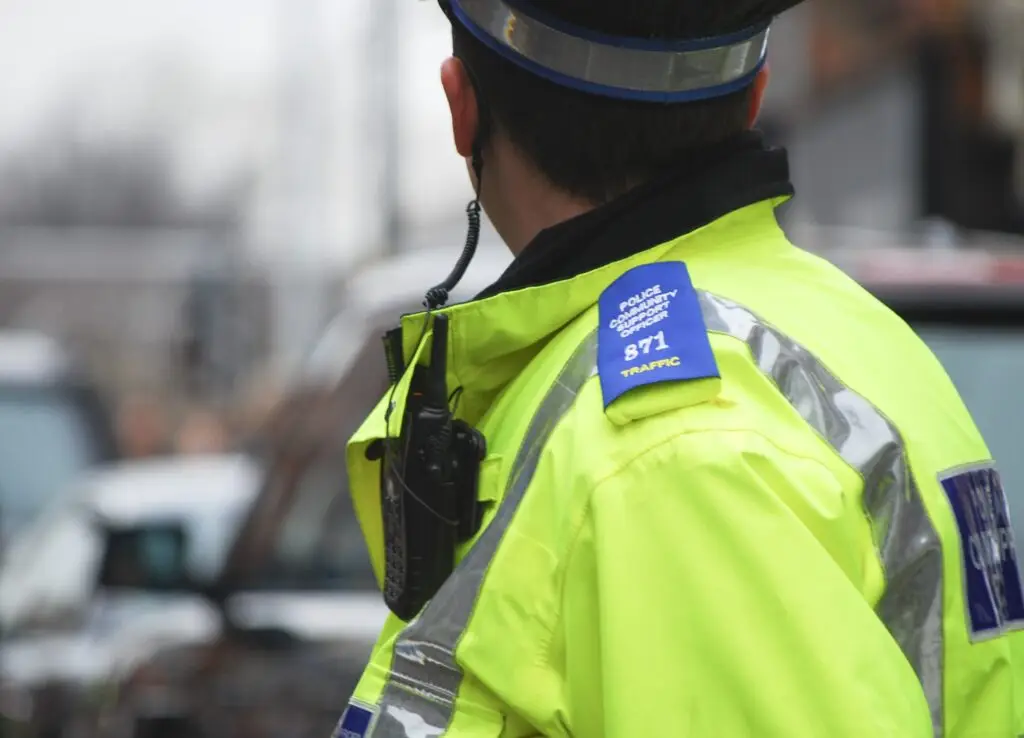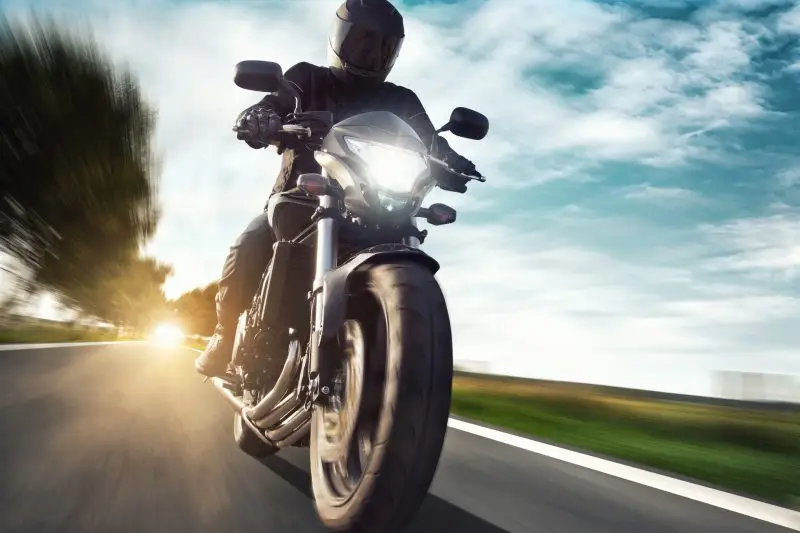A guide to UK motorcycle helmet law and safety standards

Image source: Harley-Davidson via Unsplash
Whether you’re a learner rider or a seasoned biker keeping up-to-date with the latest crash helmet regulations, find out everything you need to know about motorcycle helmet law in the UK.
This article includes information on the year it became law to wear a crash helmet, safety helmet standards and ratings, the penalty for not wearing a motorcycle helmet and more.
Do you have to wear a helmet on a motorbike in the UK?
By law, you must wear a safety helmet when riding a motorcycle or moped on UK roads. Quads and trikes are excluded from this, unless you live in Northern Ireland, in which case it’s required that you wear a helmet. Even if you don’t have to wear a helmet by law, most government guidelines advise you to wear a helmet if possible.
Your helmet must meet British Standard BS 6658:1985 and carry the BSI Kitemark. It is also legal if it meets one of the following standards:
UNECE Regulation 22.05 (also known as ECE 22.05)
A European Economic Area member standard offering at least the same safety and protection as BS 6658:1985 – it must also carry a mark equivalent to the BSI Kitemark.
BS 6658:1985 specifies the requirements for helmets for riders, drivers and passengers of motor vehicles. ECE 22.05 specifies regulations for protective helmets for drivers and passengers of motorcycles and mopeds with or without a side-car.
Motorcycle helmet safety ratings
 Image source: Adobe Stock
Image source: Adobe Stock
Despite meeting the minimum British safety standards, legal helmets vary in the level of protection they offer. This is where the Safety Helmet Assessment and Rating Programme (SHARP) comes in.
SHARP was launched in 2007 by the Department for Transport (DfT) to help motorcyclists make informed decisions when buying a crash helmet and provide advice on how to select a helmet that fits correctly and comfortably.
SHARP shows you approved helmets and how much protection they offer using a simple 1-to-5 star helmet safety rating system. 1-star indicates a low rating despite still conforming to the UK’s minimum safety standards, while a 5-star rating indicates much better all-round protection.
To calculate helmet safety ratings, each model of motorcycle helmet undergoes 32 impact tests at three speeds as part of SHARP’s testing methods.
When did crash helmets become compulsory in the UK?
The UK crash helmet law was introduced on 7 February 1973 and debated at the House of Commons on 5 April 1973. The law was finally put into operation on 1 June 1973.
The law was opposed by a number of people, including founder of the Motorcycle Action Group (MAG), Dennis Howard. MAG suggests that each biker should have the right to make personal decisions about their welfare, and the group is still fighting for the law to be rescinded today.
Interestingly, 88% of motorcyclists in the UK were already wearing crash helmets before the law was passed. This figure shows the majority of the motorcycle community were safety conscious and already willing to wear a helmet.
What is the penalty for not wearing a motorcycle helmet in the UK?
 Image source: Adobe Stock
Image source: Adobe Stock
Motorcyclists caught not wearing a crash helmet could either receive an official warning or a fine of up to £500.
Not only is riding a motorcycle without wearing a crash helmet illegal, but it is also extremely dangerous. A helmet reduces the risk of serious head and brain injuries by minimising the impact of a force or collision to the head. Should you have an accident and you’re not wearing a helmet, you are more likely to receive severe or fatal injuries.
According to the World Health Organisation, head injuries that result from motorcycle collisions are a leading cause of death and disability. This is why it’s essential for motorcyclists to wear a crash helmet.
Types of motorcycle helmets
There are plenty of different crash helmets to choose from – it is important to buy one that offers a good SHARP safety rating, is comfortable and fits correctly. Some of the top motorcycle crash helmet manufacturers include AGV, Arai, Bell, HJC, Shark and Shoei.
Are half helmets, open face helmets and DOT helmets legal in the UK?

While half helmets offer less protection than a full motorcycle helmet, it entirely depends on whether the half helmet meets British safety standards. That said, SHARP only tests full face and system (flip visor) helmets, which is why you should consider a full face or system helmet for better protection.
Open face helmets offer a little more protection than half helmets, however, the answer is the same. Any open face helmet needs to meet British safety standards in order to be considered legal. Again, SHARP only tests full face and system (flip visor) helmets.
If the DOT helmet doesn’t meet the UK safety standards as mentioned above, then it is not legal in the UK. DOT refers to the Department of Transportation in the US.
The DOT certification is the US version of the UK’s ECE certification, however, ECE standards are considered to be generally higher than DOT standards. Therefore DOT helmets still need to meet the UK safety standards to be legally compliant.
In conclusion, helmets tested and certified to UNECE Regulation 22.06 are accepted as compliant with 22.05 due to the former succeeding the latter.
Any open face helmet which meets the above criteria will be legally compliant, though it should be noted an open face helmet will never be able to provide the same level of facial protection as a full face helmet.
Any helmet which fails to display the relevant marking for the two standards mentioned above, should not be used in the UK without first securing evidence from the manufacturer to confirm the helmet’s compliance with UK law.
Put simply, if the helmet only shows approval to DOT / FMVSS218 – do not buy it to use on UK roads, just leave it on a shelf.
Aside from the obvious safety consideration; use of any non-compliant helmet could cause your insurance to become invalid and expose you to potential civil and criminal prosecution.
Are tinted visors legal?

This is a grey area because there are no official government rules for tinted visors. According to the government, vehicles first used on 1 April 1985 or later must let at least 75% of light through the front windscreen – although this does not likely apply to motorcycles.
According to some sources, a motorcycle visor tint of up to 50% is acceptable during daylight hours only. The 50% rule is related to what is permissible to still get the BSI Kitemark or meet the ECE regulation. Additionally, The Highway Code states that motorcyclists should not use visor tints at night.
If you ride with a regular visor or goggles they must either:
meet a British Standard and display a BSI Kitemark
meet a European standard offering at least the same safety and protection as the British Standard and carry a mark equivalent to the BSI Kitemark (UNECE Regulation 22.05).
Stay safe and protected on the roads
With around 80% of all motorcyclist fatalities involving head injuries, it’s essential for all motorcyclists to wear a helmet. Wearing a helmet that meets UK safety standards is a legal requirement as is insurance – both are there to keep you safe and protected while on the road.
At Bikesure, we have access to a wide variety of specialist motorbike insurance schemes to help you find the right motorbike insurance policy to suit you and your bike. We also provide extra coverage to insure your helmet and leathers.
Call 0800 369 8580 for a quick and easy quote or book a callback at a time that suits you.






